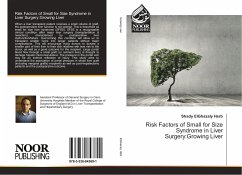When a liver transplant patient receives a small volume of graft, the postoperative liver function is not optimal. This is described as small for size liver syndrome (SFSS). SFSS is a recognizable clinical condition after major liver surgery (transplantation & resection), characterised by postoperative liver dysfunction/failure. Overcoming this condition will allow us to transplant smaller livers into larger patients without major complications. This will encourage living donors to donate a smaller part of their liver to their sick relatives with less risk to the donor, as well as a good outcome for the recipient. Large portal blood flow through a small graft (or remnant liver) is thought to damage hepatic microvasculature. The pressure in the portal vein may be an indirect reflection of injury. This study aims to understand the association of portal pressure in whole liver graft (including marginal grafts) recipients as well as post-hepatectomy patients and the postoperative outcome.
Bitte wählen Sie Ihr Anliegen aus.
Rechnungen
Retourenschein anfordern
Bestellstatus
Storno








